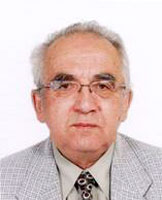The importance of the oil and gas industry for the national production sector is obvious. The interest to it is natural and lightning protection experts are not an exception here. Especially that there are enough reason for that - there is something to burn and atmospheric electricity is not the worst fire-raiser of flammable gas mixtures and liquid hydrocarbon products. However, designers of lightning protection objects in this sphere will hardly feel confident, having opened not only national regulations but also standards of enterprises. He will be confused but not very specific requirements for a number of important points and unsubstantiated claims, which are sometimes almost impossible.

The purpose of this article - the analysis of the regulatory requirements on lightning protection of facilities with large amounts of fossil fuels, estimation of their adequacy and feasibility, as well as the search of rational ways of execution of protection against lightning electricity excluding unwarranted expenditure of material resources and conflicts with the state technical inspection bodies.
E. M. Bazelyan, DEA, professor;
Power Engineering Institute to the name of G.M. Krzhizhanovsky , Moscow;
recognized Russian expert in the field of grounding and lightning protection.
1. Structure of lightning rods
The article provides an overview of national and industrial requirements in relation of structure of lightning rods on oil and gas facilities, as well as general advice on choosing the most efficient configuration of lightning rods.
The article includes the following sections:
1.1. Requirements of national regulations
1.2. Requirements of enterprises' standards
1.3. Design in accordance with the regulations
2. Grounding of a lightning rod
Read this article to see how to ground a lightning rod, to ensure the most favorable conditions for the spreading of the lightning current and at the same time comply with the requirements of normative documents.
The article includes the following sections:
2.1 Regulatory requirements
2.2. For what purpose a lightning rod is grounded
2.3. How to design
3. Spark channels sliding along the ground surface
We should not think that we are talking about a recently discovered phenomenon, which the specialists are not much aware of. Spark breakdowns of the surface soil layer are described in the monographs of the first half of the XX century and are very well known by the operating personnel of long-distance underground cable lines that have been actively used at that time.
(continued on a separate page)
The article includes the following sections:
3.1. Physics of the process
3.2. Ultimate length of spark channels
3.3. Protection from sliding spark channels
4. Pending discharges in an electric field of a thunderstorm cloud
The Ostankino tower was struck "by an inverted lightning." It started from the top of the tower and rushed to a charged cell of a thunderstorm cloud. The experts call such discharges upward, in contrast to the traditional downward, which develop from the cloud to the ground.
(continued on a separate page)
The article includes the following sections:
Related Articles:



